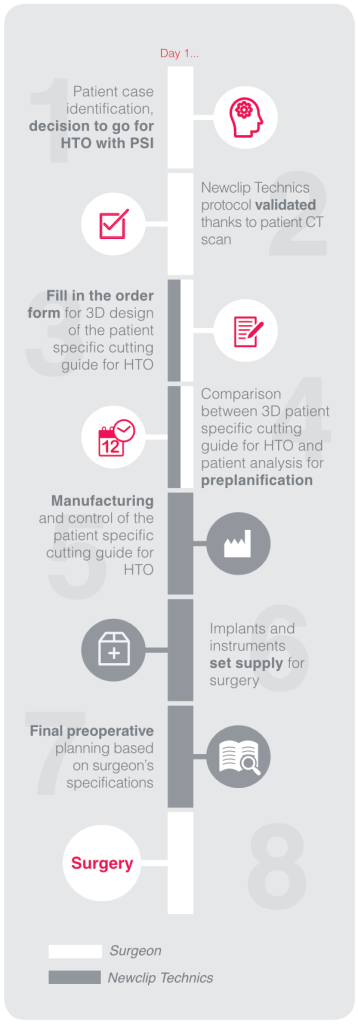Activmotion S HTO/DFO
Technical Features:
The implants of the Activ range are intended for high tibial osteotomy in adults.
- Implant well-suited to knee biomechanics: positioning onto the antero-medial surface of the tibia and orientation of the screws in an antero-posterior direction for increased resistance to stress when the knee rolls back
- Anatomically contoured implant: proximal curvature and metaphyseal slope
- Dualtec System technology: 1 polyaxial epiphyseal hole allowing +/-12.5° angulation (25° cone), for size 1 only
Implants
- 2 sizes:
- Size 1: length 61.6 mm, available in right and left versions
- Size 2: length 77.4 mm, available in right and left versions, implant design adapted to biplanar cuts
- Single fixation: Ø4.5 mm locking screws, length 30 to 75 mm (5mm increment)
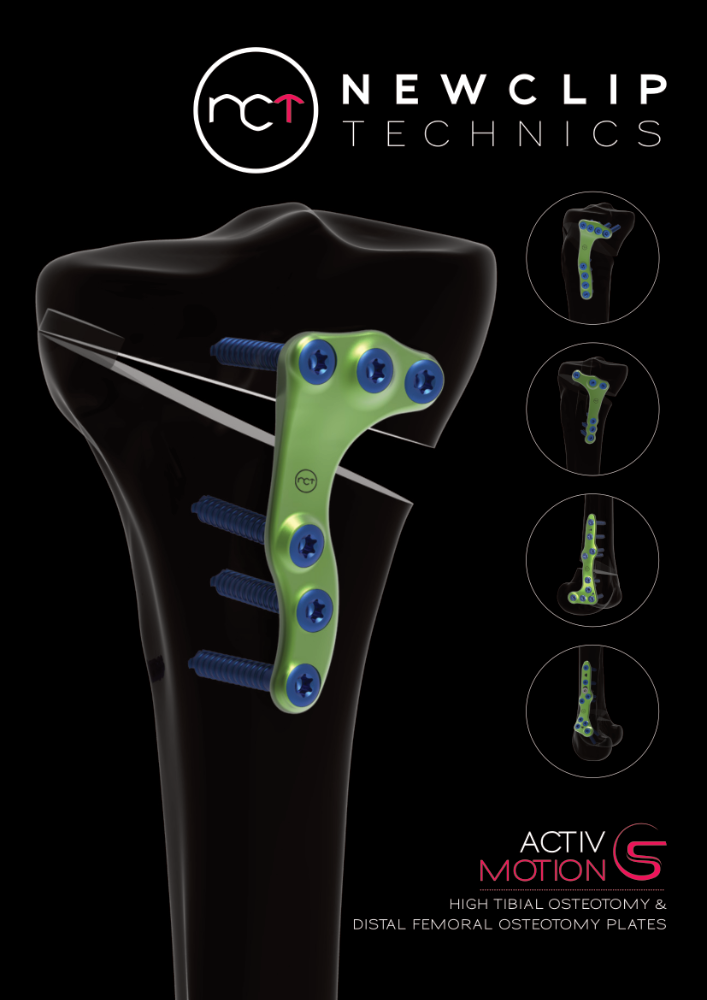
Opening Wedge High Tibial Osteotomy Plates Sizes 1+2
Technical Features:
- Anatomic asymmetrical implants (blue anodized for left plates and green anodized for right plates).
- Antero-medial positioning to be as close as possible to the lateral stress.
- The design of the size 2 implant is adapted to large biplanar cuts or large osteotomies.
- Titanium alloy TA6V implants for optimized mechanical resistance.
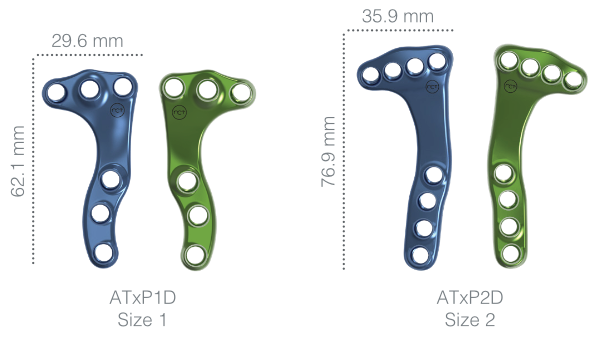
Size 1
- For monoplanar osteotomy
– Up to 12 mm of correction
For biplanar osteotomy
– Up to 6 mm of correction
Size 2
- For biplanar osteotomy
– Ascendant osteotomy
– Over 12 mm of correction

Distal Femoral Osteotomy Plates
Technical Features:
- Medial closing and lateral opening plates.
- Anatomic asymmetrical implants (green anodized for
right plates and blue anodized for left plates). - 2 offset screw holes improving the mechanical features of the assembly and preventing loss of angular correction (a):
– On both sides of the osteotomy site for closing; – Above the osteotomy site for opening.
- Monoaxial locking screws (Oneclip®): – 7 screws for the closing plate; – 8 screws for the opening plate.
- 1 polyaxial locking screw (DTS) allowing to avoid the intercondylar notch, if necessary (b). Possible angulation of the screw before locking (25° locking range) thanks to the DTS system.
- 1 ramp oblong hole allowing for a simple and controlled compression (c) for closing.
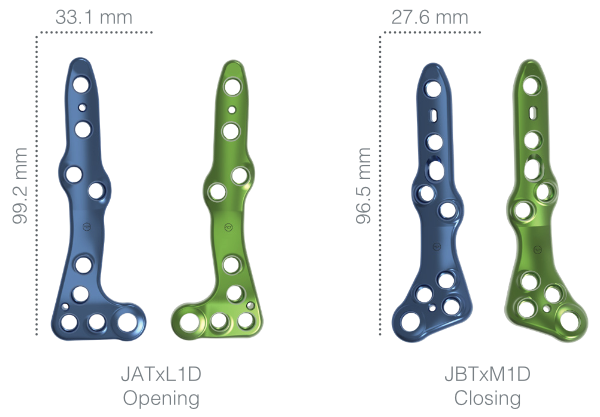

Compressive Ramp Oblong Hole
The ramp oblong hole allows a simple and controlled compression by the screw/plate interface.
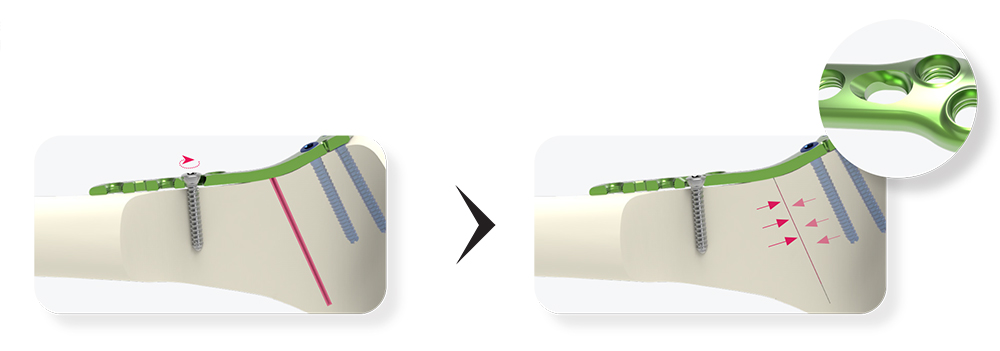
Instrumentation
- Dedicated instruments to create and maintain the appropriate angular correction during osteosynthesis: – 7 metallic wedges (6 mm to 18 mm; increment of 2 mm);
– Meary pliers (controled opening thanks to the markings – 3 to 19 mm (2 mm increment));
– Chisels;
– Bone spreader;
– Cutting guide (see page 12 to see how to use the instrument); – MIS instruments (ANC1063 and ANC1065).

Different Methods of opening Osteotomies
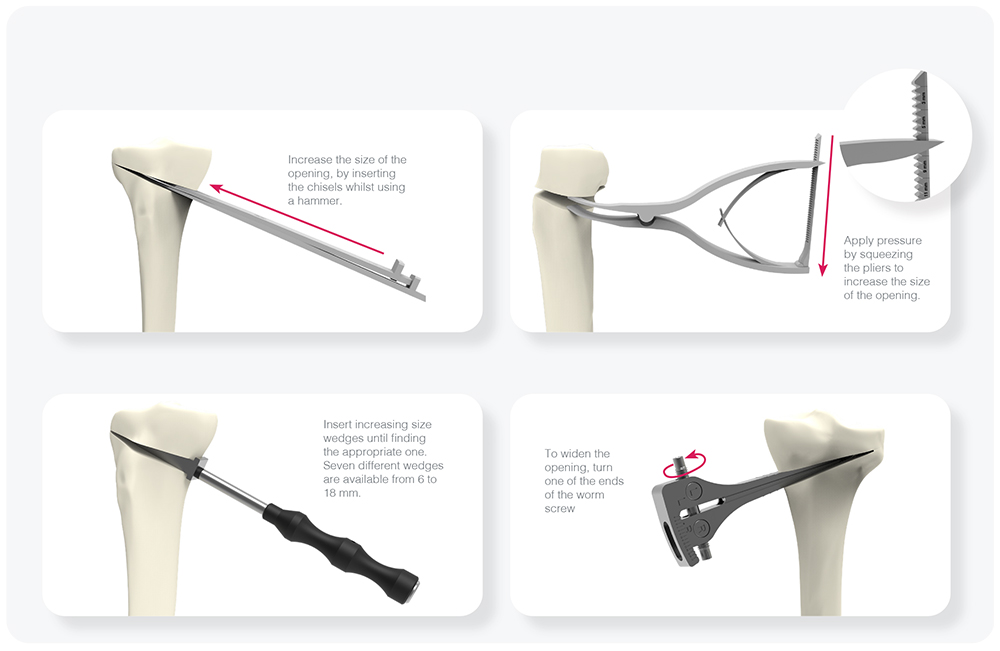
Activmotion PSI
Patient Specific Cutting Guide-Step by Step
Based on patients CT scan, the patient specific cutting guide for HTO offers an optimal correction of HKA axis and tibial slope.
Technical Features:
One single use patient specific cutting guide (PSI) for each Activmotion plates:
– 1 specific cutting guide for Activmotion plate size 1
– 1 specific cutting guide for Activmotion plate size 2

- The K-wire going through this hole allows to check: – The direction of the osteotomy cut,
– The PSI position (compliance of the real position with the planned position).
K-wire 1 mm under the cut2. - The Golden K-wire going through this hole serves as:
– a mechanical stop for the cut,
– an indication of the hinge position (hinge: 10-11 mm from the lateral cortex, distance from the tibial plateau varies between patients) - Anterior bracket between the anterior tuberosity and the patellar tendon for accurate positioning.
- Posterior anatomical brackets congruent with the tibial surface for accurate positioning.
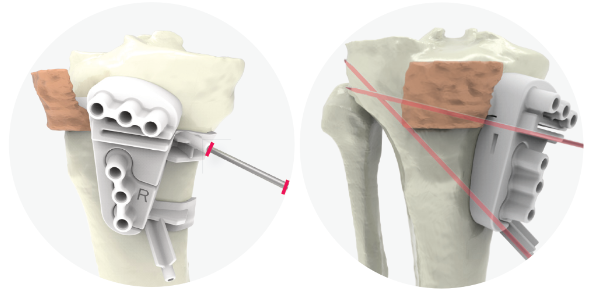
Process:
